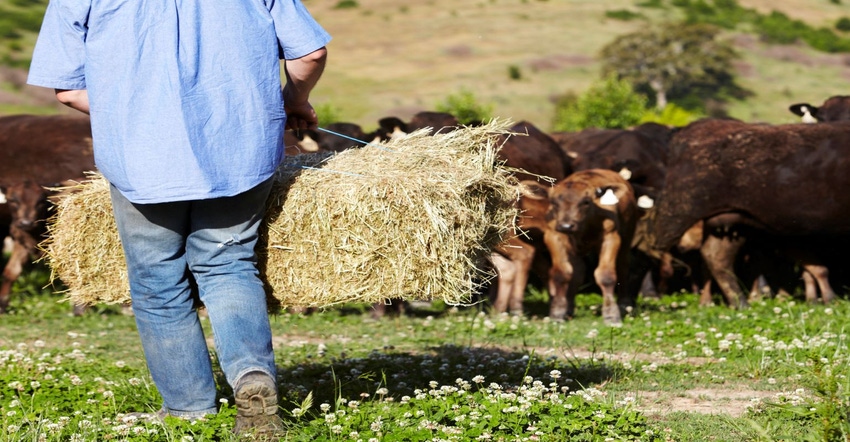Using stockpiled forage to combat fuel prices
Feeder cattle prices and hay-- not the greatest combination in 2022.
July 14, 2022

Most all the first cutting hay and even waterway grass across Iowa has been rolled up or stacked in a hay loft. Yields and hay quality were quite variable depending on your zip code; that’s nothing new. What is new is the fuel cost it took to harvest the crop, or the fertilizer it took to generate the yield. In visiting with producers, I’ve heard costs as high as $15 per bale in fuel costs alone! Keep in mind, sometimes in Iowa we put several miles on equipment just to get to the hayfield, then burn fuel to cut it, burn fuel to rake it, burn fuel to bale it, and burn fuel to get the hay back to the winter cow camp.
The easiest way to cut fuel costs…is to never start the tractor. As a general rule, roughly half of our hay yield in Iowa comes from the first cutting. If we use this cowboy math, we can also assume that our fuel costs for cuttings 2 and 3 (if we’re lucky enough to get rain) will nearly double on a per bale basis. Certainly, we can recover some or all of those expenses by increasing the sale price of our hay, but we still have to find someone willing to pay more for hay in a market environment where feeder cattle prices are good…but not great. All said, it will be a challenge moving forward.
The obvious alternative is to let the cows harvest cuttings 2 and 3 for you, but that's easier said than done. In many cases, pasture acres were converted to hay because of poor fence, poor water, lack of facilities, etc. If these obstacles can be navigated, the potential cost savings could be substantial. There are a number of factors to consider, but fortunately most are management decisions that can be made with a little planning and foresight.
What forages do you have?
The considerations for a toxic tall fescue hay meadow are certainly different from a red clover/brome stand, or an established field of alfalfa. However, the management of all three through the summer and early fall is the same: just leave them alone. As much as producers despise the negative effects of fescue toxicity, it can be a wonderful grass when stockpiled for winter grazing. It holds protein content better than most other grasses, even under a snowpack. If you’ve taken a cutting of hay off it already, the grass will not produce a seedhead again in a growing season, reducing the toxicity load in the plant. Hay acres with a heavy amount of legumes can still be grazed in the fall and winter, though some precautions do need to be taken. Since the plants are likely mature, bloat risk goes down. Remember though, cows do need to be removed immediately after the first killing frost in the fall, then allow 14 days to pass before reintroducing cattle back to that forage. We’ll cover more details on proper management of stockpiled forage as the fall progresses.
When do you wean?
Feed costs are high. Every day that calf is gaining weight alongside the cow without supplementation is a win financially. However, we still need ample time for the dam to recover so she can do it all over again. Likewise, the management of the herd becomes much simpler when only one class of livestock is grazing. If stockpiled forage is part of your grazing plan for the fall, consider weaning prior to turnout. It may also simplify your fencing strategy as well as your rotational grazing plan. For fall calving herds, protein requirements for the cow must become a higher priority.
Source: Iowa State University which is solely responsible for the information provided and is wholly owned by the source. Informa Business Media and all its subsidiaries are not responsible for any of the content contained in this information asset.
You May Also Like



